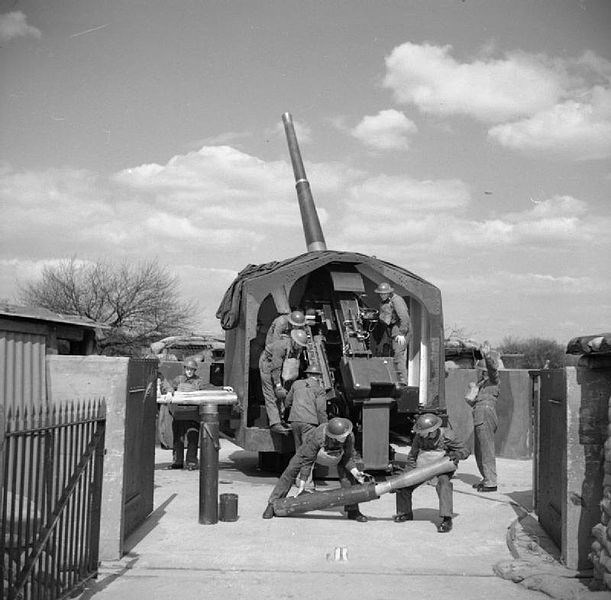Carnbooth AA Battery Traditional Geocache
Lorgadh: As the owner has not responded to my previous log requesting that they check this cache, I'm archiving it.
Karen
Lorgadh
Volunteer UK Reviewer - Geocaching.com
Geocaching.com Guidelines
Geocaching.com Help Centre
UK Geocaching Information
-
Difficulty:
-

-
Terrain:
-

Size:  (micro)
(micro)
Please note Use of geocaching.com services is subject to the terms and conditions
in our disclaimer.
This was going to be part of the "Elusive Cider Tree" series, but i thought better than to have you wading through the River Cart.
Boots or wellies for this one and take a minute once you are on site to picture how this must have looked 70 years ago.

4.5 inch AA Gun
A World War II anti-aircraft battery was sited to the west of Carmunock. Site number GSG3 (early), S3 (later). Part of the Clyde AA Defences, the site was known as Carnbooth, possibly Mid Netherton or Carmunock. The location of this enclosure makes it very probable that this is one of a series of heavy anti-aircraft batteries which were guarding the approaches to Glasgow and the Clyde Estuary during the Second World War.
This heavy anti-aircraft position is situated on Netherton Braes and consisted of a four 4.5 inch gun-emplacement battery, with the GL mat (gun laying radar false horizon hexagon) to the N. The command post, magazines, gun store, engine room and computing rooms all survive in a field. The hut bases for the crew accommodation camp are still visible to the E.
The 4.5 inch QF Mark II naval gun was utilised on a single gun mounting (Mounting Mk 1) in anti-aircraft guise in static sites. The pedestal mount was bolted to concrete in an armoured turret, a travelling platform was available to transport the gun and mounting between positions. The first unit became operational in February 1939. These 16.5 ton anti-aircraft mountings had a max elevation angle of 80 degrees. However, most mountings were Mark 1A with an elevation range of -9.5 to 80 degrees, this enabled the gun to be dual role (AA/CD) in coastal areas.
The guns were fitted with Magslip electrical data transfer from Predictors AA Nos 3 and 5 and were probably used inially with GL radars and UB 10 18 feet base optical height & rangefinders. AA control radars evolved rapidly. The gun was laid and fuzes set by pointer matching, it is unclear the extent to which advances in 3.7-inch fire control were applied to 4.5-inch. However, mid-war Machine Fuze Setter No 10 was added, this improved the rate of fire from 8 to 10 rounds per minute and raised the effective ceiling to 34,500 feet. However, initially the standard fuze was an igniferous design, No 199 with a maximum running time of 30 seonds that limited performance.
What is very significant here, is that following a site visit in 2008, investigation of the remains revealed that this was a formerly undocumented postwar AA battery conversion. This is in fact one of a small number of former World War II heavy anti-aircraft batteries that were for use during the Cold War.
The changes to the WWII site suggest that the battery had been incorporated into the Cold War anti-aircraft defences created as part of the postwar ROTOR air defence system. ROTOR was a huge and elaborate air defence radar system created during the 1950s to counter the threat of Soviet bombers, and which controlled anti-aircraft batteries operated by Fighter Command and the British Army.
The four gun emplacements were found to have been of a Type L construction, but the six original sheltered ammunition stores constructed around the perimeter of each emplacement have been removed and replaced by four Type H structures. In addition, each emplacement has been provided with its own engine room, magazine and targeting computer.
Other than a few concrete bases and some piles of demolition debris, little remains of the accommodation camp. Some evidence of the camp sewage system remains evident on the ground.
Additional Hints
(Decrypt)
Qba'g unat nebhaq